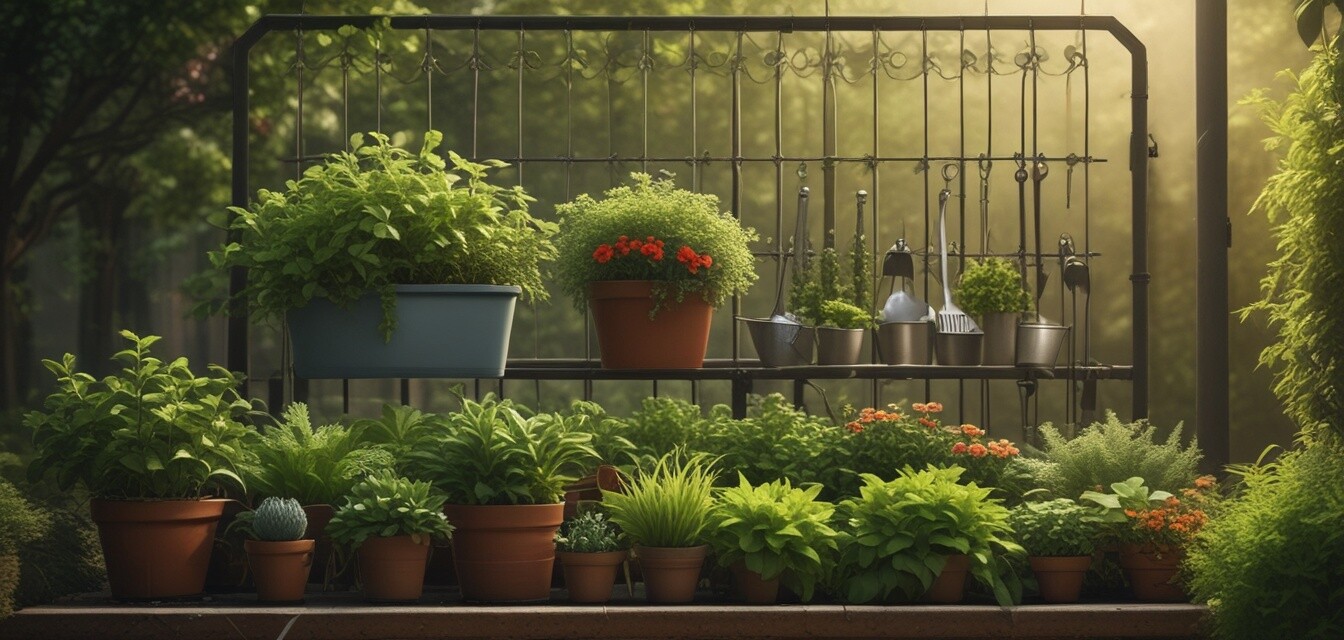
Essential tools for vertical gardening
- Vertical gardening maximizes limited space, perfect for urban settings.
- Essential tools include trellises, vertical planters, and specialized watering systems.
- Choosing the right materials enhances the success of your vertical garden.
- Consider plant types and maintenance needs for a thriving garden.
- Research eco-friendly options to support sustainable gardening practices.
Vertical gardening is a fantastic solution for those with limited space, allowing you to cultivate a beautiful and productive garden even in small areas. With the right tools, you can create an impressive vertical garden that not only saves space but also adds an aesthetic appeal to your home. In this guide, we’ll explore the essential tools you need for successful vertical gardening, perfect for both beginners and seasoned enthusiasts.
What is vertical gardening?
Vertical gardening involves growing plants upward rather than sprawling horizontally. This method allows you to optimize small outdoor or indoor spaces, making it an excellent option for urban dwellers or those with limited garden space. Using various support structures and planter arrangements, vertical gardening helps create lush green spaces while also providing stunning visual interest.
Key tools for vertical gardening
When embarking on your vertical gardening journey, having the right tools is crucial. Below are some essential tools that will help you maximize your vertical gardening experience:
Trellises
Trellises support climbing plants and help them reach new heights. They can be made from various materials, including wood, metal, or plastic, and come in a range of sizes and styles. Consider a trellis that complements your garden's aesthetics. Here are some options:
| Material | Uses | Pros | Cons |
|---|---|---|---|
| Wood | Supports vines and climbers | Natural look, durable | Can rot over time |
| Metal | Framework for strong support | Long-lasting, stylish | Can rust, may heat up |
| Plastic | Various designs for space-saving | Lightweight, weather-resistant | Less aesthetic appeal |
Vertical planters
Vertical planters are specially designed to create tiers of plants, making great use of vertical space. They come in several forms, including pockets, wall-mounted systems, and stacked planters. Here are some tips for choosing vertical planters:
- Check the drainage system to prevent waterlogging.
- Choose materials that match your garden's environment.
- Consider the weight of the planter when filled with soil and plants.
Innovative watering systems
Ensuring your vertical garden is adequately hydrated can be challenging. Innovative watering systems can simplify this task:
- Drip irrigation: Provides accurate watering directly to the roots.
- Watering wands: Extendable wands allow for easy reach.
- Self-watering systems: Maintain consistent moisture levels for plants.
Gardening tools
Basic gardening tools are essential for maintaining your vertical garden. Here are some that you may find useful:
- Pruning shears: Help keep your plants healthy by removing dead or overgrown areas.
- Hand trowel: Perfect for planting and lifting soil in smaller spaces.
- Gloves: Protect your hands while working with various materials.
Eco-friendly options
To support sustainable gardening practices, consider using eco-friendly tools and materials. This may include:
- Biodegradable planters made from natural materials.
- Organic fertilizer options for nourishing plants.
- Rainwater collection systems to minimize water usage.
Choosing the right plants for vertical gardening
When selecting plants for your vertical garden, consider the following factors:
- Growth habit: Look for climbers, trailing, or compact plants.
- Light requirements: Ensure plants match the lighting conditions of your space.
- Maintenance needs: Choose plants that fit your willingness to care for them.
Popular plant choices for vertical gardening include herbs, strawberries, and flowering vines. For more information on plant selection, visit our Garden Inspiration page.
Conclusion
Vertical gardening is an exciting way to incorporate greenery into limited spaces while showcasing your creativity. By investing in essential tools such as trellises, vertical planters, and innovative watering systems, you can set the stage for a thriving garden. Don’t forget to choose the right plants tailored to your conditions for a stunning vertical garden that impresses both you and your guests.
Pros
- Maximizes limited space effectively.
- Enhances aesthetic appeal of outdoor and indoor spaces.
- Supports sustainability with eco-friendly options.
Cons
- Can require more initial investment for tools.
- Regular maintenance may be needed.
- Not all plants are suitable for vertical growth.
Further resources
To dive deeper into vertical gardening and discover more products that can enhance your garden, be sure to check out our other resources: